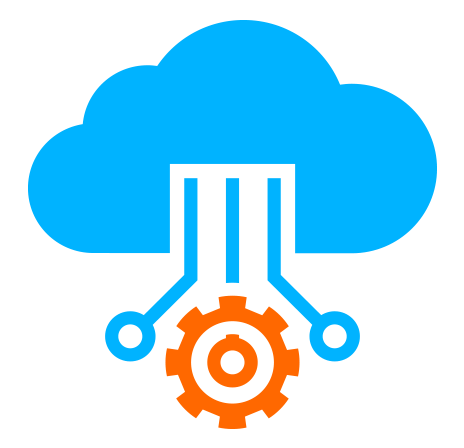 Server
Colocation
Server
Colocation
 CDN
Network
CDN
Network
 Linux Cloud
Hosting
Linux Cloud
Hosting
 VMware Public
Cloud
VMware Public
Cloud
 Multi-Cloud
Hosting
Multi-Cloud
Hosting
 Cloud
Server Hosting
Cloud
Server Hosting
 Kubernetes
Kubernetes
 API Gateway
API Gateway

The NVIDIA H100 GPU is generally worth the upgrade from the A100 for users focused on cutting-edge AI model training, large-scale deep learning, and demanding AI inference workloads. The H100 offers significantly faster AI training—up to 3x to 9x faster—and dramatically improved inference speeds, up to 30x faster for large language models, powered by its advanced Hopper architecture, enhanced memory bandwidth, and specialized Transformer Engine. However, consideration must be given to higher power consumption, upfront cost, and specific workload needs before upgrading from the A100.
The NVIDIA A100, based on the Ampere architecture, revolutionized AI and HPC workloads at its release, offering versatility and robust performance with up to 80 GB of HBM2e memory and support for Multi-Instance GPU (MIG) technology. The H100, released later and built on the Hopper architecture, doubles down on AI acceleration with 80 GB of HBM3 memory, greatly increased memory bandwidth, and a dedicated Transformer Engine optimized for large language models and other advanced AI computations.
1. AI Training Speed: The H100 provides between 3x to 9x faster AI training speeds compared to the A100, depending on the workload and precision (FP8, FP16) used.
2. Inference Speed: For large language models and transformer-based AI, H100 can deliver up to 30x faster inference performance.
3. Tensor Core Performance: Fourth-generation Tensor Cores in H100 and the addition of the Transformer Engine give a leap in matrix operations and precision flexibility.
4. Memory Bandwidth: H100's 3.35 TB/s memory bandwidth nearly doubles that of the A100 (up to 2 TB/s), reducing bottlenecks during demanding tasks.
5. Parallelism: H100 features 14,592 CUDA cores and 456 Tensor Cores, significantly more than the A100’s 6,912 CUDA cores and 432 Tensor Cores, enabling superior throughput for parallel computation.
1. Hopper Architecture (H100): New Transformer Engine optimized for mixed precision (FP8/FP16), boosted dynamic programming via DPX instructions, and second-generation MIG technology enhance utilization and scalability.
2. Ampere Architecture (A100): Earlier generation with solid performance, but lacks these specific new AI-focused engines and precision optimizations.
3. Power Consumption: While the A100 generally runs around 250-400 watts, the H100 can consume up to 700 watts, needing better cooling infrastructure but offering higher performance-per-watt in AI tasks.
*. H100 is best for:
1. Training and deploying massive deep learning models such as large language models (LLMs).
2. Enterprises and cloud service providers requiring industry-leading AI acceleration.
3. Scenarios demanding the fastest inference speeds and training throughput.
*. A100 is best for:
1. Organizations prioritizing cost-effectiveness with solid AI and HPC performance.
2. Use cases where energy efficiency and well-established workflows matter.
3. Tasks that do not require the absolute latest AI acceleration features.
The H100's superior performance comes at a higher price, ranging from $25,000 to $40,000 per unit as of 2025. Power demands are also higher, potentially increasing operational costs. For many businesses, renting H100 GPU instances on cloud platforms offers a more flexible and cost-effective pathway to access this advanced technology without heavy capital investment.
Cloud providers like Cyfuture Cloud, AWS, Google Cloud, and Microsoft Azure offer hourly rental of H100 GPUs, starting from as low as $2.80 per hour, allowing startups, research teams, and enterprises to scale AI workloads efficiently without upfront purchasing costs. This option enables users to leverage H100’s performance benefits with flexibility and lower risk.
Q: Is the H100 better for all types of AI workloads?
A: While the H100 excels at training and inference for large-scale and transformer-based AI models, some smaller or less complex AI workloads may still perform adequately on the A100.
Q: How much more power does the H100 consume compared to the A100?
A: The H100 can consume nearly double the maximum power (up to 700W) compared to the A100 (max ~400W), which requires better cooling and power infrastructure.
Q: Can the A100 be sufficient for deep learning research?
A: Yes, the A100 remains a robust choice for many AI research and HPC applications, especially where budget constraints exist.
Q: What precision formats are supported by H100 that improve performance?
A: The H100 supports FP8 and FP16 precisions extensively through its Transformer Engine, dramatically boosting training and inference for large models.
Upgrading from the NVIDIA A100 to the H100 GPU is highly beneficial for organizations aiming to push the boundaries of AI and HPC workloads, especially those working with massive deep learning models and requiring unmatched training and inference speeds. Despite higher costs and increased power needs, the H100’s advanced architecture and superior performance make it a future-proof investment or a valuable cloud rental option. However, for less intensive tasks, the A100 remains a viable, cost-effective solution. Choosing between them depends largely on workload requirements, budget, and infrastructure readiness.

Let’s talk about the future, and make it happen!
By continuing to use and navigate this website, you are agreeing to the use of cookies.
Find out more


